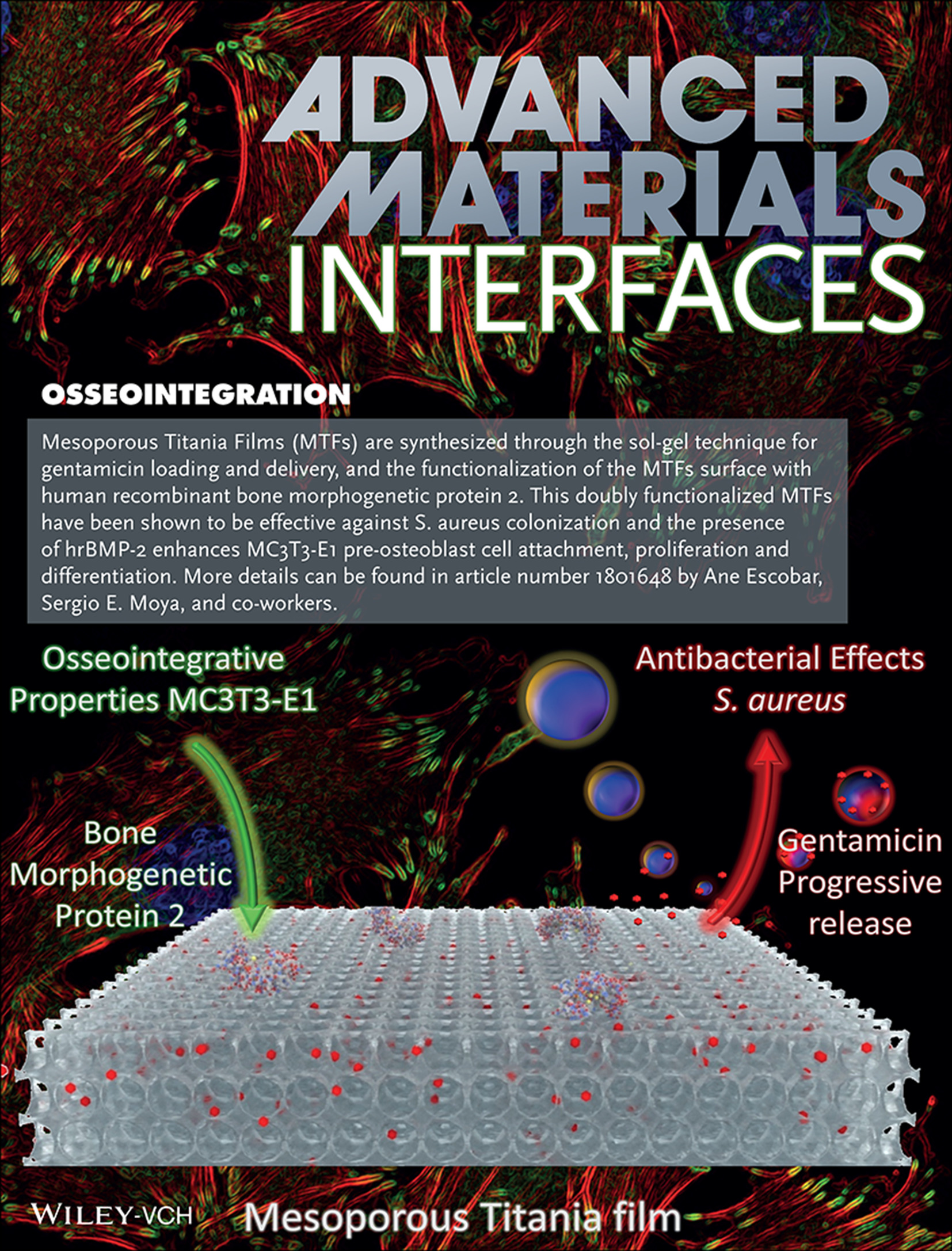A. Escobar, N. Eduardo Muzzio,
L. E. Coy, H. Liu, E. Bindini, P. Andreozzi, G. Wang, P. C. Angelomé, M. Grzelczak
Novel approaches are needed to avoid bacterial infections following implant surgery. Here the use of mesoporous titania films (MTFs) for gentamicin loading and delivery and the surface functionalization of MFTs with human recombinant bone morphogenetic protein 2 (hrBMP‐2) are discussed. Gentamicin is incorporated into the MTF pores by immersion of the porous materials in gentamicin solution while hrBMP‐2 is adsorbed on top of the MTF. Contact angle and X‐ray photoelectron spectroscopy measurements are performed to prove gentamicin loading and hrBMP‐2 functionalization. An initial burst release of gentamicin takes place in physiological media followed by a prolonged release that lasts weeks. Such a release profile is highly appealing for bone implants where a high concentration of antibiotics is necessary during implant surgery while a lower antibiotic concentration is needed until tissue is regenerated. The MTFs loaded with gentamicin and functionalized with hrBMP‐2 are effective against Staphylococcus aureus colonization, and the presence of hrBMP‐2 enhances MC3T3‐E1 preosteoblastic cell attachment, proliferation, and differentiation.

